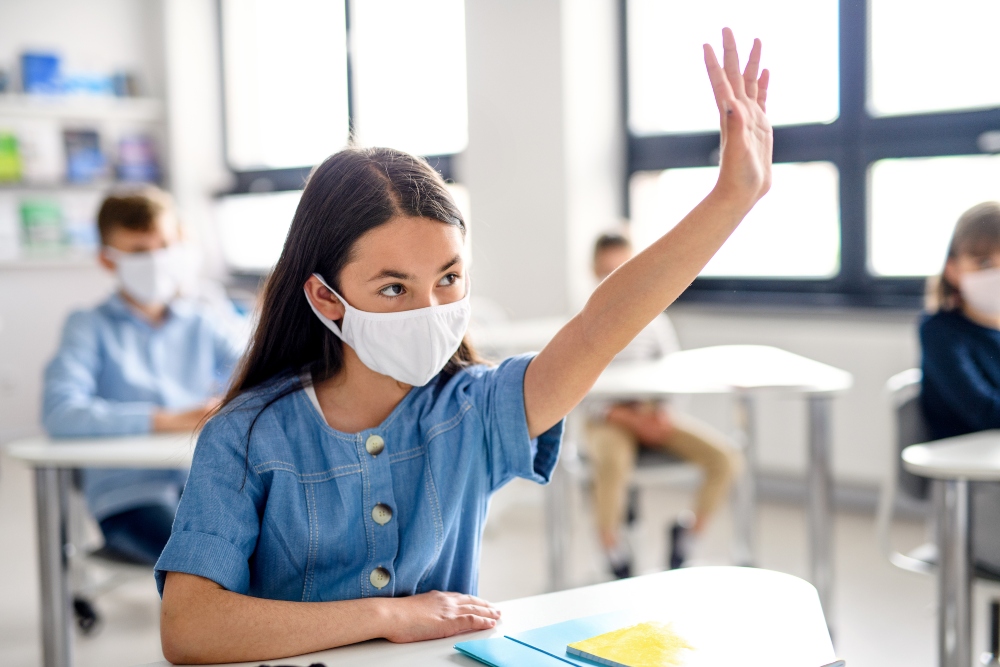
SSUCv3H4sIAAAAAAAACnRSu47cMAzsA+QfDNUrQC8/dG2QMkCAIFWQQg9qVzittbDkCw6H+/fQ9nrPRdKJw9GQHPLt86emIdaU6MhT87ZEGMeU5lInU2MeEWanOz7B6GE6IuBjzVM06QhaU91lNFdAcJxTWuD3NUlKNXUuUJZid8iZCmfU2MCHxNbRry1u9sSaxB+YIt8h3xKQ0yFTZrtkvsXiICUzQp4L2fNbvf+IffWz2+b9h94Pd8k5nZovOSU4w6n5OcYXmEqsrw1U91Fhe/zejTBnGN3rOuvBgwkSmM2D+3jEwOClY5pKZh1VjFtqB82oMRxU0EF2odsbIwMLzLe8pzAISZWAQLX3gnptpYfgwbTuQRYSuiAZklttqVIGyWaQlIPmmkHPmPsgg/ay7aSmA7dIZm6ggwqMIpUr1fdtYPZBbrVkwQdLW+VaqjroqO46R6VF0dBbbplandnsIM9/KkzX4+bN7GM+LP0lO5MWgjy4dZuii+P58C3Xy3qE+zeX57FOi83k0VzK+WYsXsdTE1ATdvxiSkG63/FDIYcnn6+HOmOu65LuqsTjoS4hlwJdGgQbOj4wpWR/J2zHfYmos7azC2HsnqM/jh6XDogQDIKzgNuwApfTCqqDkVSLjlvvA8d1oIXvfwEAAP//AwBatimWpgMAAA==
Going back to school this fall will take special planning. No matter how excited your child is to get back to their friends and teachers, school this fall will change and some of those changes may be permanent. For the safety of everyone in school, you’ll need to give them some tools to manage the risk.
Hygiene Practices
Help your kids remember that every new environment is a chance to wash their hands. Encourage regular restroom use and immediate hand washing, and encourage them to carry hand sanitizer in their backpack or pocket, if applicable. Before taking a drink, eating a snack or their lunch, get them in the habit of sanitizing. If possible, send sanitizing wipes with your child that they can use on their desk space or shared table space if they move from one spot to another.
Understanding
Your child may not understand the need for masks around their friends, especially if nobody in your social or family sphere is at particular risk. However, this may be a good time to remind your child that there are those in the world who have a harder time staying healthy, such as folks with heart conditions or asthma. Their family members may not be in danger, but their friends and the family members of their friends may be at special risk.
Spacing
Once your child is comfortable and in a steady habit of sanitizing, help them understand what six feet looks like. Use a pool noodle or some other tool to make it easy for your child to understand how close is too close. Their classroom chairs and desks likely have chair glides to make moving a bit easy and quiet. Also be aware that your child may need to have the courage and confidence to ask another child to back away if they feel crowded. Teachers and classroom aides will obviously be monitoring this, but they will also be busy, so let your child know that they may need to use their words to request space from another child.
Masking: Wearing and Removal
None of us are comfortable in a mask, but your child may struggle with the mechanics of the mask, especially if they’re active and breathing hard at points in the day or if they wear glasses. To make masking easier,
- let your child see you putting your mask on before you have to go out
- make sure your child has a Ziploc bag and spare masks in their backpack
- practice safe mask removal
If you have your mask on when you leave your house or vehicle, your child will be more comfortable seeing the need to wear theirs. One mask throughout the day probably won’t be enough; your child will need to remove it at least once, for lunch. Practice unhooking the elastic straps from their ears and moving the mask to a Ziploc bag for disposal or an airtight container for washing without touching the fabric or breathing panel of the mask. Then sanitize and apply the new mask.
Set Up a Disinfection Station at Home
As soon as everyone gets home from their day, make sure that everybody disinfects. Put a rubber mat at the front door for shoes. Reusable disinfectant rags, saturated with rubbing alcohol and water can be laid in the bottom of the tray to disinfect shoes without discoloring them. Store hand sanitizer and wipes in that same spot so everyone can clean up and change their clothes. Put what they wore to school in a plastic bag and wash all garments in warm water, or put the plastic bag in the hamper for the laundromat. Backpacks and papers may be more of a challenge, but at least you can take the time to wipe down phones and tablets. Don’t use spray disinfectants on electronics.
Flu season tends to spike when kids get back together from a break, but because coronavirus is so easily transmitted, the risk this year is much more severe. Teaching your child to function effectively in a mask could protect them, their classmates, the adults in the school, and your entire household. Plan out your day around staying safe and do what you need to do to keep the virus out of your home.


